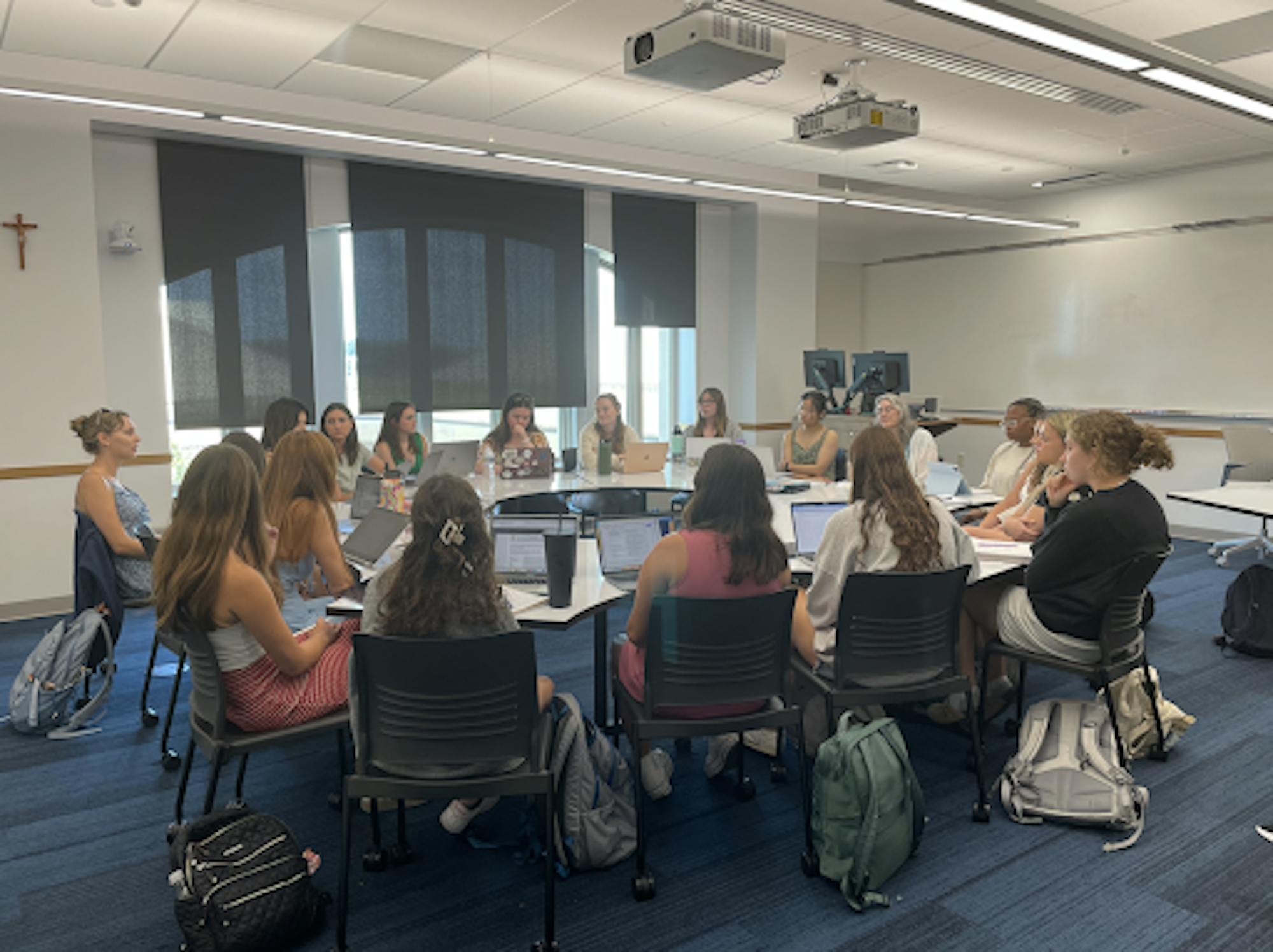From the dreaded “freshman fifteen” to TikTok “fit checks” to easy access of photoshopping and Facetune, opportunities for body comparisons are everywhere, especially for college students. But “Body Image,” a 40000-level psychology class, seeks to examine this very topic.
Dawn Gondoli, professor of psychology, said she has been teaching this class since 2018 while conducting research in the field of body image.
“To be able to teach a subject that is intrinsically interesting to me and maps onto my research is a good thing,” Gondoli said. “I like seeing students encountering new things, new ways of thinking about things and being able to communicate.”
The class, which is offered to juniors and seniors, analyzes readings on specific topics related to body image. This week, the topic centered around methods of interventions and future directions.
Students also take turns leading the discussion and write a two-to-three-page paper weekly reflecting on the discussions.
“I like reading all their writing because every student has their own distinctive voice,” Gondoli said. “By the end of the semester, I can recognize people and their writing, and I like to have that sensibility.”
Gondoli also said because Notre Dame places an emphasis on athletics, students are pushed into a mentality of perfectionism and stress.
Isabelle LeBlanc, a senior psychology major, is a student in the “Body Image” class and a former diver for the Notre Dame Swim and Dive Team. After seeing how prevalent body image issues are, especially on the Notre Dame campus and the competitive sports setting, she was inspired to take this class, she said.
“I feel like there's a constant presence of body image concerns and just not enough discussion about it,” she said. “And so I was excited to take a class where I could kind of voice my opinions on certain body image issues and how it's perpetuated.”
LeBlanc said she had discussions with her teammates about body image while on the swim and dive team.
“I was on a team for three years and we also have to have discussions with each other because people on the team were struggling hard with eating disorders and trying to make sure that they look good in uniform,” LeBlanc said. “It was super common and was heartbreaking to hear.”
With the rise of technology, the class has also examined the intersection between media and body image. They have studied the ways in which existing social structures, like sexism, have continued to uphold these ideas, Gondoli said.
“I think it definitely comes down to the way that social media and commercials and films curate this image of an ideal woman and define what it means to be the feminine,” LeBlanc said. “Historically, we've been taught that we need to compete against other women, that this is the kind of thing we're supposed to do.”
Gondoli said she focuses a lot on the modern world of social media in the class and in her research.
“I think it’s tough and with social media, it’s hard to get away from it,” Gondoli said. “We’re insulated a bit here too so we have less diversity in all kinds, including body diversity.”
Gondoli said she recommends students take this class because it pushes them to think about a complex topic, like body image issues, in different ways.
“Students come away with additional strategies and things that they can apply to their own life,” Gondoli said. “Young people need to be exposed to this kind of research to help move this movement forward.”
Psychology class explores the relationship between body image and social media
Professor Dawn Gondoli discusses methods of intervention in the social media world with her students in the 40000-level psychology class, “Body Image."









